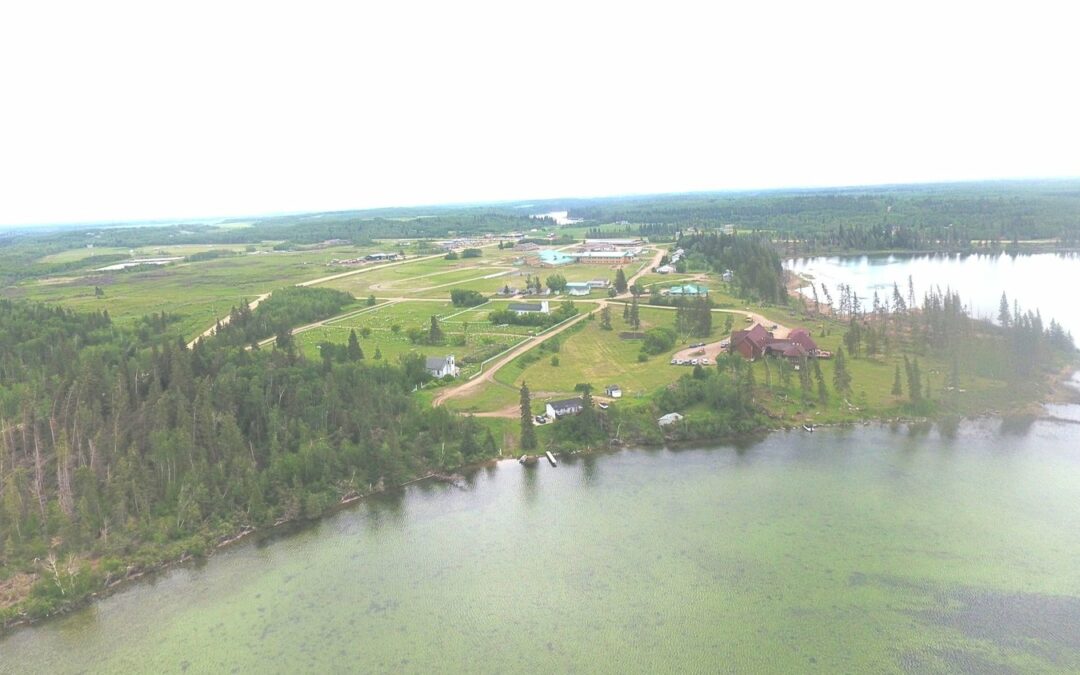By Shari Narine, Local Journalism Initiative Reporter, Windspeaker.com
It’s taken 21 years for the Ahtahkakoop Cree Nation in central Saskatchewan to work through the Treaty Land Entitlement process and be compensated for the land it was shorted when it adhered to Treaty 6 in 1876.
Chief Larry Ahenakew has been part of that TLE journey from the beginning.
“I was in council back then when we first put the case in (July 2001). Then I got in as chief and we were accepted in 2010 (to the TLE). It’s been a long road. It’s been a long time since we got to this point,” said Ahenakew. “I thought it would take four, five years. I didn’t think it would take 21 years. I’m glad we got to this point and that I’m still sitting here.”
On April 6, Ahenakew, federal Crown-Indigenous Relations Minister Marc Miller and Saskatchewan Minister Responsible for First Nations, Métis and Northern Affairs Don McMorris announced the conclusion of tripartite negotiations and a settlement agreement for the Ahtahkakoop Cree Nation’s TLE claim.
The band will be compensated $43.3 million and reserve shortfall land of just over 4,000 acres. Ahtahkakoop Cree Nation also has the option to acquire up to 40,659.97 acres to add to their reserve lands.
TLE claims are intended to remedy historic allegations where First Nations received insufficient reserve land promised to them under Treaty. Through Treaty 6, Ahtahkakoop was to receive one square mile per family of five or 128 acres per person. In 1878, a federal Order in Council set apart 42,988.8 acres of land as reserve for Ahtahkakoop, enough for 336 people. Ahtahkakoop Cree Nation asserted that the total eligible membership at the time was 368 individuals, resulting in a Treaty land entitlement shortfall of 4,115.2 acres.
The TLE agreement was ratified in October 2021 with a 97 per cent favourable vote by Ahtahkakoop members. Seven consultation meetings were held in different cities and within Ahtahkakoop.
Ahenakew admits that band members were hoping to “see a lot of money” personally from the settlement. However, as it’s a TLE and not a specific claim compensation, the framework agreement specifies the settlement money must be spent on acquiring land.
“They thought that it was a per capita basis (and) we had to reiterate this was for TLE, to purchase land for our shortfall for our future generations,” he said.
The money can be invested, however, and the interest spent on band development.
“In the long run it would be good to leave the money there, but at the same time, we need more land. We’re a growing First Nation… We need housing. We need land,” said Ahenakew.
He says there are currently between 3,800 and 3,900 members.
The band has 12 years to acquire the shortfall acres (4,000+) from Crown land owned by either Canada or Saskatchewan and convert it to reserve lands. Ahenakew is unclear as to whether that land must be purchased at market value.
A TLE board was established last fall for Ahtahkakoop. The community decided on the make-up of the board, which consists of four on-reserve members and three off-reserve members. That board and chief and council will determine which lands to purchase for the reserve.
“(We want to) get some land for our Elders and youth so they can have some cultural grounds, some hunting grounds to go up there, wherever we can buy some Crown lands around our community,” said Ahenakew.
He also points out that the purchased land can be leased out for revenue for the band.
As for the other 40,000 acres, there’s no time limit as to when that needs to be purchased. However, Ahenakew says since that land will primarily be for economic development, the cost for commercial land will be considerably higher. He also points out that the $43.3 million settlement won’t go that far in purchasing commercial land.
The Crown land must be purchased before the band can start looking at commercial land.
“Hopefully we can expedite that within the next year or two years. In a couple years we can move forward into buying commercial lands and getting economic development,” said Ahenakew.
When Ahtahkakoop Cree Nation made their initial application for the TLE in 2010, Ahenakew says the band was offered $262 per acre for approximately an $8 million to $9 million settlement. The band rejected that offer. By 2014, Ahtahkakoop was working in partnership with Mistawasis Cree Nation and Sakimay First Nation and the government turned down the three Nations’ request for $424 per acre for a $12 million to $14 million settlement for Ahtahkakoop.
“We worked together. Nobody signed their TLE for 10 years until we agreed for a price per acre,” said Ahenakew.
Further negotiations saw the acreage price increased to $1,026 per acre.
“And here we are today. We all worked together. So going forward it will benefit any other future TLE bands,” said Ahenakew.
Neither Mistawasis Cree Nation nor Sakimay First Nation members have ratified their agreements yet.
The $43.3 million settlement for Ahtahkakoop will see Canada provide $30.7 million and Saskatchewan the remaining $12.6 million. Canada and Saskatchewan will also set aside $6.7 million as compensation to rural municipalities and school divisions once taxable land is set apart as reserve.
(Photo of the Ahtahkakoop Cree Nation.)
